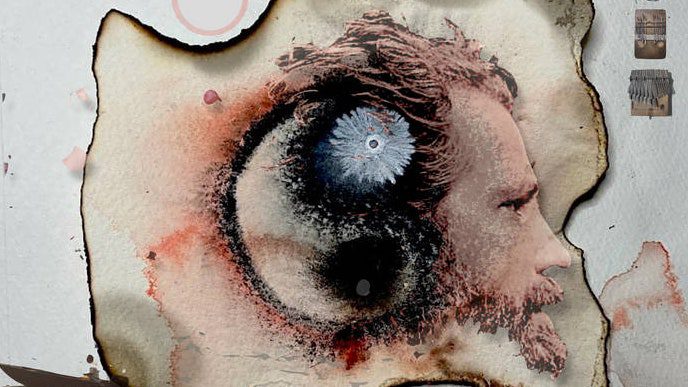
Milford Graves was a mentor, among a host of other things: percussionist, professor, autodidact, herbalist, acupuncturist, vegan, and the inventor of his own martial art. Born in Jamaica, Queens, he was at the vanguard of ’60s free jazz in the New York Art Quartet, embarking on a visionary journey until his death in 2021. He played all kinds of drums with all kinds of things—tire irons, pestles, the branches of trees—and developed a style based on the human heart but overturned the pleasant falsehood that it beats in 4/4 time. To see him perform—too many arms splashing out, a whistle or a microphone in his mouth, or all this and more—is to witness the great yawp of the universe vibrating in one mortal frame.
For four decades, Graves taught at Bennington College, where Joe Westerlund was one of his pupils. Westerlund is a Wisconsin native who has had most of his music career in North Carolina. He began as the drummer for the austerely psychedelic Americana band Megafaun in the 2000s and went on to add his subtle, murmuring time to many projects, especially with the Justin Vernon camp (that’s the Wisconsin connection) and the Sylvan Esso/Mountain Man camp (the Bennington connection). It was at Sylvan Esso’s studio that he recorded Elegies for the Drift, his third album of solo percussion, a year into his new life as a teacherless student.
Graves was not the only role model whose loss, or imminent loss, Westerlund was grieving as he developed the album. There was his ailing father-in-law, for whom he hung the cosmos in a mobile with a silvery, slowly spinning miniature, “Prelude to Quietude.” And there was his friend Miles Cooper Seaton, who had died in a car accident the year before. “The Circle,” which incorporates Seaton’s voice and a hailstorm Westerlund recorded after he learned of his passing, is seven cleansing minutes of what sounds like rain beating on little bells and gongs. It’s the centerpiece of an album that belies preconceived notions about how solo percussion sounds.
Emphasizing a resonant, melodic palette of gamelan, thumb piano, idiophones, and metallophones, Elegies for the Drift moves in periodic waves, in small impulses and intimate suggestions—nothing so pat or pushy as beats. “You can’t put a dang-danka-dang and call that the swing rhythm,” said Graves. For him, swing was survival, a way to keep moving by any means necessary. Westerlund does not put a dang-danka-dang. With warm electronic impastos, impressionistic colors, and a songful mien, Elegies for the Drift is mainly an ambient record. It’s significant that “The Circle” has little obvious relation to Seaton’s music in Akron/Family, any more than the rest of the record overtly resembles Graves, who taught individuality above all else. Westerlund has found his own tonic, yogic yawp; he learned his lessons well.
